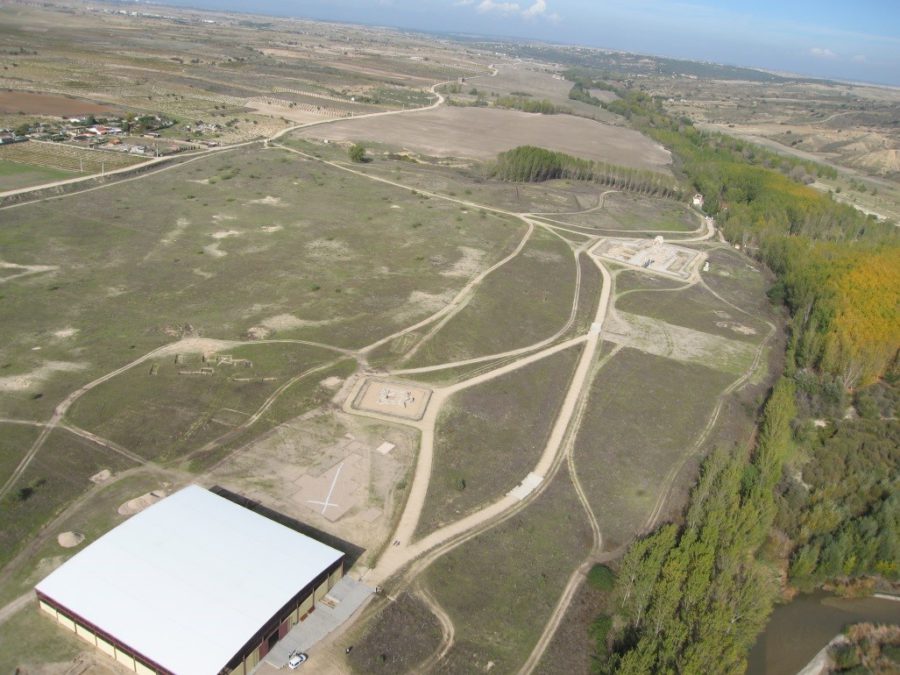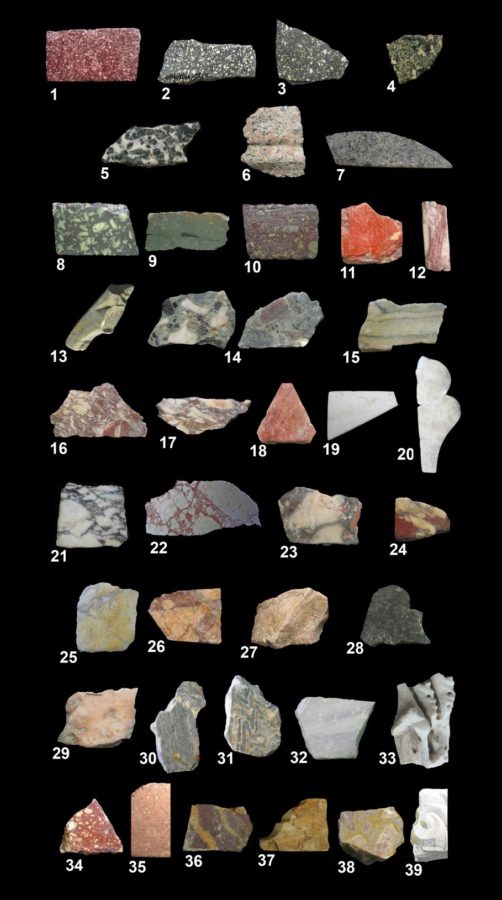This project on “materials for building a villa” is part of the research that we have been carrying out at the Santa María de Abajo de Carranque site (Toledo) since 2004 and is a magnificent example of the progress that can be achieved through the sum of efforts through collaboration between public institutions, such as the UNED, the JCCM and the IGME, and private entities such as the Palarq Foundation.
The archaeological site of Sta. María de Abajo (Carranque, Toledo), open to the public as the Archaeological Park of Castilla-La Mancha, has become in the last decade an essential reference for those who wish to know aspects related to the Hispano-Roman rural world, the history of the last centuries of Romanity and the transition to the Middle Ages in the centre of the Iberian Peninsula. The extension of the site -18 ha on a terrace on the right bank of the Guadarrama River-, the variety of architectural testimonies that cover a wide chronological cycle between the high imperial Roman period (1st century A.D.).) and the end of the 19th century, the good state of conservation of the mosaics that were part of the Materno house, as well as the magnificent set of marmora that decorated the palatial building from the late Roman period (end of the 4th century AD), give this site a very prominent place in Spanish archaeology.
 Aerial image of the Santa María de Abajo site (Carranque, Toledo) located next to the river Guadarrama (right) and of the path that connected both plateaus from antiquity through the port of Guadarrama (left). Photography: Carranque Research Team
Aerial image of the Santa María de Abajo site (Carranque, Toledo) located next to the river Guadarrama (right) and of the path that connected both plateaus from antiquity through the port of Guadarrama (left). Photography: Carranque Research Team
Among the priority tasks assumed by the Research Team in the last decade is the study of the very rich marble decoration of the palace building erected at the end of the 4th century A.D. in the northern sector of the enclave. The qualitative and quantitative richness of the marble (marble, limestone, granite, slate, etc.) that formed part of the interior decoration of the spaces of this palace building (Figure 2) allows us to affirm that Carranque is one of the main examples of the massive use of the marble throughout the Roman west. The archeometric analyses carried out allow us to know the quarries of origin of the marble that are located all over the Mediterranean arch (Egypt, Anatolia, insular and peninsular Greece, Tunisia, Italy) and in the Iberian Peninsula itself (Lusitanian quarries of Estremoz (Portugal), Bética of Almadén de la plata, Espejón (Soria), etc.). The sample of marmora used is a magnificent sample of the wide chromatic variety gathered for the decoration of the building and of the great gesture of power, status and wealth that meant for its owner to gather in this point of the peninsular interior an enormous quantity of ornamental rocks coming from the most important quarries of the Roman area.
 Sample of the variety of marmora used in the decoration of the palatial building of Carranque. Carranque Research Team
Sample of the variety of marmora used in the decoration of the palatial building of Carranque. Carranque Research Team
On this occasion, we also wanted to know the origin of the stone materials (granite, limestone and gypsum) used in the construction of the three main buildings that make up the Roman and late Roman complex (Materno house, funerary building and palatial complex). For this, and following a very complete analytical protocol already validated in the study of the decorative marmora (macroscopic, petrological, mineralogical and geochemical study), we propose the characterization of these construction materials with the final objective of being able to know their areas of supply and analyze the strategies of exploitation, distribution and commercialization of these materials in the local or regional framework between the Roman and Late Antique period. It is of special interest to know the source of supply of the granites, given that they were used both in the late Roman phase (end IV A.D. in the Materno house, funerary building and palatial building), and in the Visigoth phase (ss. VI-VII) when they were used in the elaboration of the monolithic sarcophagi. One of the objectives of the project is, therefore, to know if the sources of supply of granite were the same in Roman and Visigoth times, as well as to know the areas of origin of the material in each case and the possible routes (fluvial or terrestrial) of arrival up to the site.
- Materials to build a Roman villa - 11 December, 2019


